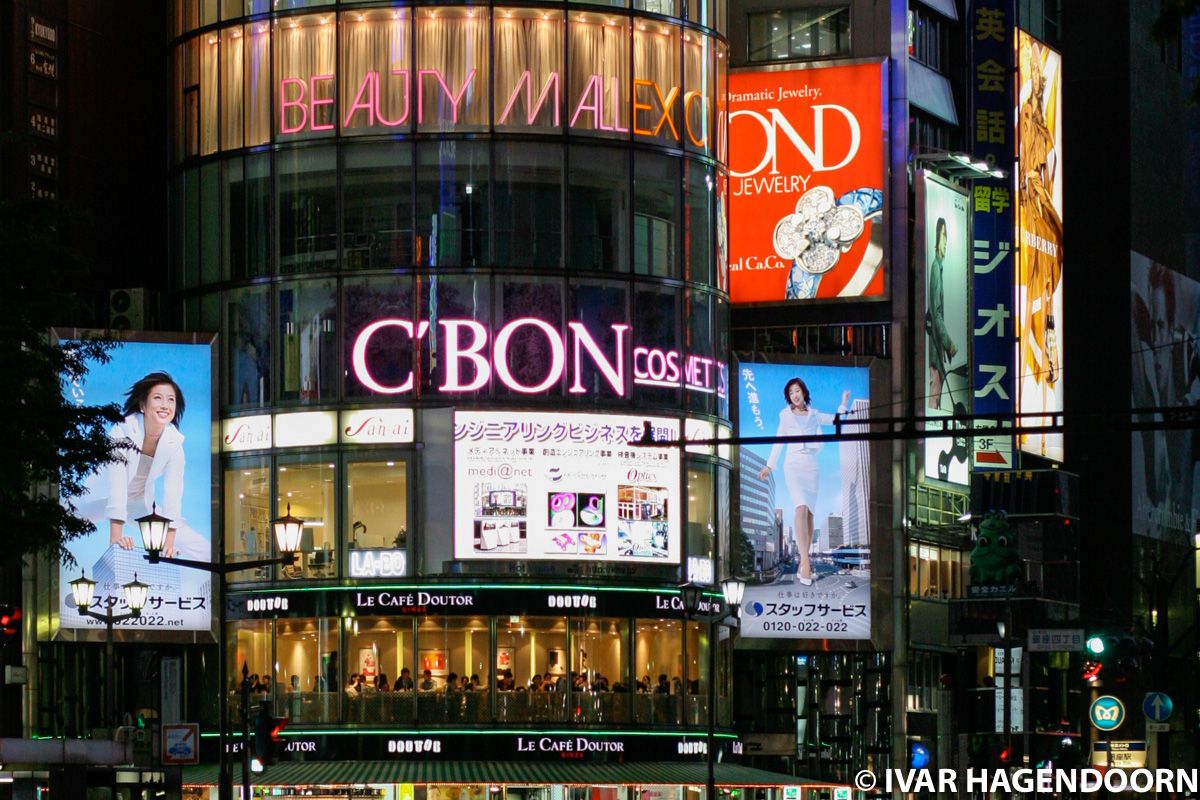
Architecture of the Night/Luminous Buildings, a new and excellent mega exhibition at the Netherlands Architecture Institute, traces the history of the use of artificial light in architecture, from the illumination of the Eiffel Tower during the 1889 World Exhibition to today's multimedia facades.
The invention of electricity and new building materials at the turn of the 20th century meant that urban life was no longer restrained by daylight. Buildings could be lit from the inside so people could continue working at night, and from the outside transforming the building into a landmark. Streets could be lit after dark so people felt safer going out at night.
It is fascinating to see how the possibilities of artificial lighting captured the imagination of architects. Perhaps equally fascinating is the historical context. In the U.S. electricity companies were the main drivers of change, pushing other companies to bath their buildings in light. At first skyscrapers were lit using floodlighting. It wasn't until the Pepsi Cola building (1960) by Skidmore Owings and Merrill and the Seagram building (1958) by Mies van der Rohe and Philip Johnson that the building itself became a source of light, thanks to ceiling lighting on each floor.
A recent project by Lab[au], a Belgian architecture and design studio, shows how the use of artificial light has moved on from simply leaving the lights on after work. They fitted the 4,200 windows of the 145 meter high Dexia Tower in Brussels with LED lights, transforming the facade into a giant display. The LED's were linked to a multi touch screen on the ground level outside the building where passers-by could generate both static and dynamic images, which were instantly translated into a new lighting configuration.
Following the oil crisis of the 70s the abundant use of artificial lighting had become suspect, but in recent years there has been a resurgence of interest among architects in the use of artificial lighting. The Kunsthaus in Graz by Peter Cook and Colin Fournier, the Allianz Arena by Herzog and de Meuron and the Galleria Department Store in Seoul by UN Studio all make innovative use of artificial lighting. Some cities have also discovered light as a form of city branding, lighting the night with laser shows on special occasions.
Environmental concerns are still an issue though. Light pollution has been recognized as a form of pollution on par with other environmental pollutants. As satellite images show in urbanized areas it no longer gets dark at night. It is only during a major power failure, such as the one that struck New York and part of the East-Coast of the US and Canada in August 2003, that you realize the extent to which buildings and streets are being lit.
Architecture of the Night/Luminous Buildings is at the Netherlands Architecture Institute, Rotterdam until 6 May 2007.